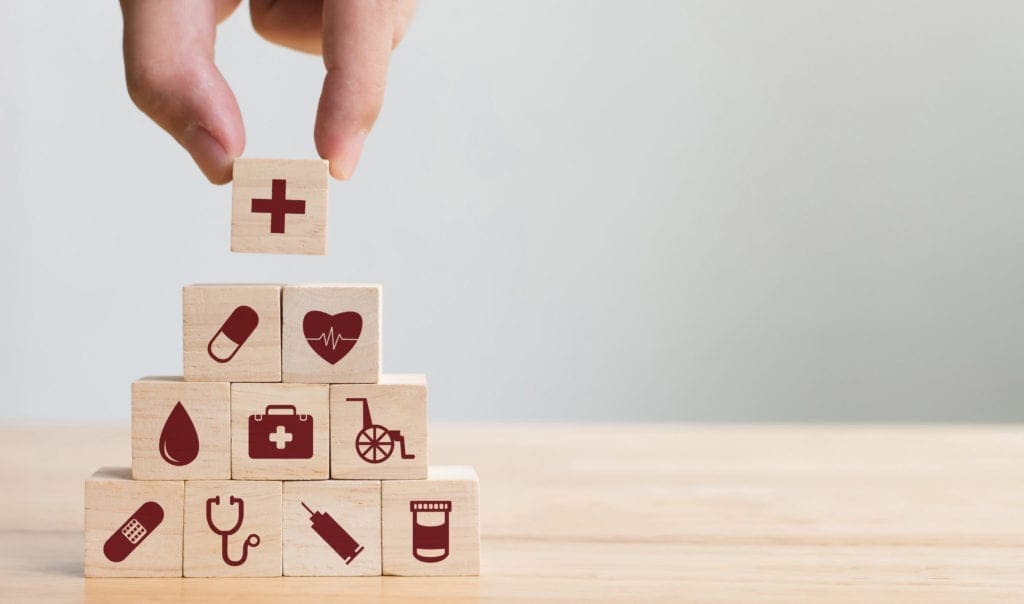Pharmacy discount cards have become as pervasive to the healthcare model as direct-to-consumer advertising; in fact, we are now receiving advertising for pharmacy discount cards. People use them every day to save themselves money, often without even batting an eye.
- How good can they really be for patients? A couple questions one might consider in a deeper dive into this topic:
- How do pharmacy discount cards work?
- How do they make money?
- If I save money, who loses money?
How do pharmacy discount cards work?
Much different from copay assistance cards provided by many manufacturers that serve like rebates, many pharmacy discount cards have a different origin: marketing firms. Marketing firms work with several pharmacy benefit managers (PBMs) who negotiate prices with pharmacies to keep costs low. Why would a marketing firm want to help you with your medication costs? What do they gain from helping you save money? Stay tuned for that answer.
Next, marketing firms work to get the consumer access to the card – via direct-to-consumer advertising, mailers, card placement in medical offices, smartphone apps, etc. If you haven’t seen one of these cards in one of these venues, don’t worry. You will. They are being tossed in with your utility bills, handed to you by your doctor, and plastered in between your favorite television shows in the commercials. We’ve all heard the adage, “there’s no such thing as a free meal,” so how can a free card carry significant savings to patients? That brings us to our next question.

How do they make money?
You present a discount card at the pharmacy, and the pharmacist executes his or her best Harry Potter impression. *Poof*. That $200 diabetes medication becomes $68, but let’s break down this process from the beginning to see how and why a marketing firm is behind this process.
As mentioned previously, the marketing firm partners with a pharmacy benefit manager, which is essentially a buying group for many smaller insurance companies. By pooling a bunch of insurance companies together, they negotiate pricing for prescriptions at every independent pharmacy and chain. They are helping the pharmacy benefit manager do three things: advertise, increase the size of their pool, and collect your personal information. They are recruiting patients who have no insurance or poor insurance to willingly give them your personal information with each prescription filled. When you sign up or present discount cards at the pharmacy, you are often consenting to allowing many discount card companies to collect and sell your information, resulting in more spam calls and higher risk of identity theft. Information is as good as money in the direct-to-consumer world we live in; that advertising mailer you didn’t request or that Facebook ad that popped up innocently in your feed today could be the result of your willingness to share your information with a PBM. As far as the marketing companies are concerned, your personal information is worth more than actual money because they can sell it over and over. It is a renewable cash flow stream. Information is money, and you just gave them access to a lot of it.
If I save money, who loses money?

Too Powerful to Refuse
As the pool gets bigger, they get better negotiating power until they are too big to refuse. Their negotiating becomes a “my way or the highway” one-sided offer where a pharmacy must choose between taking the offer for insurance contracting or choosing to lose a large percentage of their patients.
Because discount cards use the same pharmacy benefit managers as large insurance contracts, pharmacies can be in breach of contract for a larger insurance pool if they refuse to take a discount card ran by the same PBM, regardless of how little they reimburse = even if it’s less than the cost of the medication. They piggyback on the power of the PBM to get what they want like a parasite.
Consider this as choosing between two ways of bleeding out – slowly or quickly. The end result is the same.
The “Agreed Upon” Price and The Clawback
In any other retail business, the transaction is finalized at the register between the customer and the business. In pharmacy, however, that “agreed upon” price, as mentioned earlier, is only agreed upon by the discount card companies, and it isn’t even the end of the transaction at the register.
Introduce, the clawback: an occasion where the pharmacy benefit managers recuperate money after the fact by electronic means that pharmacies cannot control. In many cases, discount card companies charge the patient MORE than the actual cost of the medication. Long after the consumer has used the medication, in some cases when it is completely consumed, the PBM will clawback an amount which may leave the pharmacy with a slim profit or even a loss.
Why should we care what happens after the register?

The Indirect Costs of Discount Cards
“Free” discount cards come with a price that you don’t directly pay or even see, but it’s there. It is accepted in most retail businesses a 50 percent markup on goods – or gross profit margin. However, in pharmacy, a hard day’s work could result in single-digit markup on goods. It’s the only retail landscape that is being expected to survive on such small profit.
Using pharmacy discount cards comes with an indirect cost – less profit leading to less staffing and longer wait times. Trying to do more with less resources has become the mainstay of most pharmacies, but the true cost of this cascade is patient safety. While you wait in that long line at the pharmacy, look at your pharmacy staff. The pressure they are under to pump out more prescriptions faster, as a result of decreased reimbursements, is palpable. We certainly strive for 100 percent accuracy and safety, but we are all human and make errors from time to time. As the patient need for prescriptions increases and number of pharmacies decrease, what results is an increasing risk of more errors.
Everyone believes that pharmacies are a booming business, but a bustling business with lots of money exchanging hands can be deceiving. You must follow the money trail, which ultimately ends up at the pharmacy benefit managers.
Don’t believe me? Look around. Over 100 independent pharmacies nationwide have closed and chain pharmacies are closing or reducing workforce on every corner, while PBMs like Express Scripts report net earnings of over $1 BILLION.
When you discount a product below cost, you don’t keep the lights on. If you value your pharmacy, ask your pharmacy staff the safest option for discounting a medication. If you didn’t pay anything for a card and it just came in the mail, it’s probably not worth anything.
We need more people in this new healthcare system to keep organized and highly functioning — don’t prevent us from doing that by cutting our prices down below the cost of the actual medication.
For a second, think about how a discount card can possibly benefit the patient, the discount card company, AND the pharmacy at the same time. It can’t. In some ways, our desire to find more affordable healthcare has resulted in us paying a much greater cost: the quality of our healthcare and the lack of privacy. Speak to your pharmacist about how to manage the cost of your medications in a way that doesn’t shut down your local pharmacy.
Pharmacists like me are advocates for affordable medications and work daily to find affordable alternatives for many patients given their medical circumstances and insurance limitations. Our livelihood depends on removing barriers to access to medication necessary to treat or control medical conditions. Ask us to help you find something that will provide similar benefit and is in your price range, but not at the expense of your pharmacy.
I know that it’s unpopular to say, “don’t use discount cards,” but it’s for good reason. I’ve even had someone tell me after reading my last article,“If you told my dad not to use a discount card, he’d go to another pharmacy.” Although I would never want to deter someone from coming to my pharmacy, the irony is that a patient who may bring prescriptions with a discount card could actually do more harm than good to my ability to keep my pharmacy open. How can increased business result in decreased profits?

It’s Not All About the Money
Additionally, I understand there are some people who couldn’t afford their medication without them because of high-deductible insurance plans or no insurance options, and we are very sympathetic to that. Pharmacies and pharmacy staffs are dedicated to patient health, and sometimes using discount cards is what’s best for patient health; after all, if one can’t afford medications, it’s the worst case for the pharmacist-patient relationship. Everything in medicine is measured in terms of risk vs. benefit, and in the case of unaffordable medications, no one benefits. However, for years now pharmacists have served behind the scenes as patient affordable care advocates providing patient-specific recommendation for the best therapeutic AND financial benefit. Contrary to public perception, we loathe having to be the bearer of bad news to a patient about the cost of their medication. We want your medications to be affordable AND benefit you, and we often work with your doctor to ensure that happens.
Discount cards: what seems like a great solution to soaring medication prices is actually contributing to the problem. What we need is healthcare reform, not a workaround.

